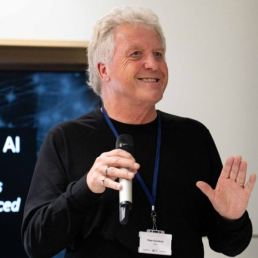Guirardel cores for multiple cubulations of a group
Abstract
Given two actions of a group $G$ on trees $T_1,T_2$, Guirardel introduced the "core", a $G$--cocompact CAT(0) subspace of $T_1\times
T_2$. The covolume of the core is a natural notion of "intersection number" for the two tree actions (for example, if $G$ is a surface group
and $T_1,T_2$ are Bass-Serre trees associated to splittings along some curves, this "intersection number" is the one you'd expect). We
generalise this construction by considering a fixed finitely-presented group $G$ equipped with finitely many essential, cocompact actions on
CAT(0) cube complexes $X_1,...,X_d$. Inside $X=X_1\times ... \times X_d$, we find a $G$--invariant subcomplex $C$ which, although not convex
or necessarily CAT(0), has each component isometrically embedded with respect to the $\ell_1$ metric on $X$ (the key point is this change from
the CAT(0) to the $\ell_1$ viewpoint). In the case where $d=2$ and $X_1,X_2$ are simplicial trees, $C$ is the Guirardel core. Many
features of the Guirardel core generalise, and I will summarise these. For example, if the cubulations $G\to Aut(X_i)$ are "essentially
different", then $C$ is connected and $G$--cocompact. Time permitting, I will discuss an application, namely a new proof of Nielsen realisation
for finite subgroups of $Out(F_n)$. This talk is based on ongoing joint work with Henry Wilton.


